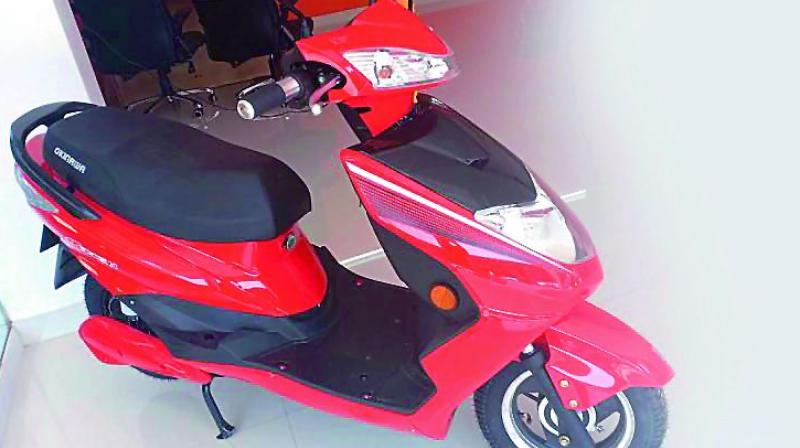Two-wheelers to help India realise EV goals

New Delhi: Hurt by high fuel prices, Vinod Gore, a farmer in Gove village in Maharashtra, ditched his petrol scooter for an electric model, underlining how two-wheelers are driving the country’s goal of electrification of its vehicles.
Mr Gore’s electric scooter, built by Indian start-up Okinawa, runs for about 100-120 km (60-75 miles) on a single charge which costs the sugarcane farmer less than 10 per cent of the Rs 150 ($2.15) he would otherwise have spent on fuel for the same distance.
“I bought it to save money,” said Gore, who paid Rs 75,000 for the scooter and expects to recover the cost in two to three years in terms of savings on petrol and maintenance.
The government has set a target of electric vehicles making up 30 per cent of new sales of cars and two-wheelers by 2030 from less than 1 per cent today.
But its efforts to convince carmakers to produce electric vehicles have flopped mainly because of no clear policy to incentivise local manufacturing and sales, lack of public charging infrastructure and high cost of batteries.
Cost-conscious two-wheeler buyers like Gore might be a better bet. It would also open up a new market for global companies like Japan’s Yamaha Motor and Suzuki Motor that are drawing up initial plans to launch electric scooters and motorcycles in the country.
The potential is huge. India is the world’s biggest market for scooters and motorcycles with annual domestic sales exceeding 19 million in the fiscal year ended March 31, 2018 - six times that of car sales over the same period.
The next biggest market is China, with annual motorcycle sales of about 17 million in 2017.
Electric scooters make up a fraction of the total but are growing fast. In fiscal 2017-18, sales more than doubled to 54,800 from a year ago while electric car sales fell to 1,200 from 2,000 over the same period, according to data from the Society of Manufacturers of Electric Vehicles (SMEV).
By 2030, sales of electric scooters are expected to cross 2 million a year, even as most carmakers resist bringing electric cars to India.
The roadblocks for scooters are fewer. Compared with cars, scooters are lighter, which means they can use less powerful batteries that are cheaper. The scooters can also be charged quickly and more easily, often using existing plug points in homes, and their price is similar to petrol-powered models.
The challenge is that most electric scooters sold today are utilitarian and not as powerful as models that run on petrol that can go faster and climb gradients easily.
The supply chain is not robust which means manufacturers need to rely on importing components.
Importantly, electricity supply in smaller towns and cities, where demand is picking up, is irregular although frequent power shortages in India are a thing of the past.
“India’s electric revolution will be led by two-wheelers. It is a value for money equation,” said Sohinder Gill, global CEO at Hero Electric.

